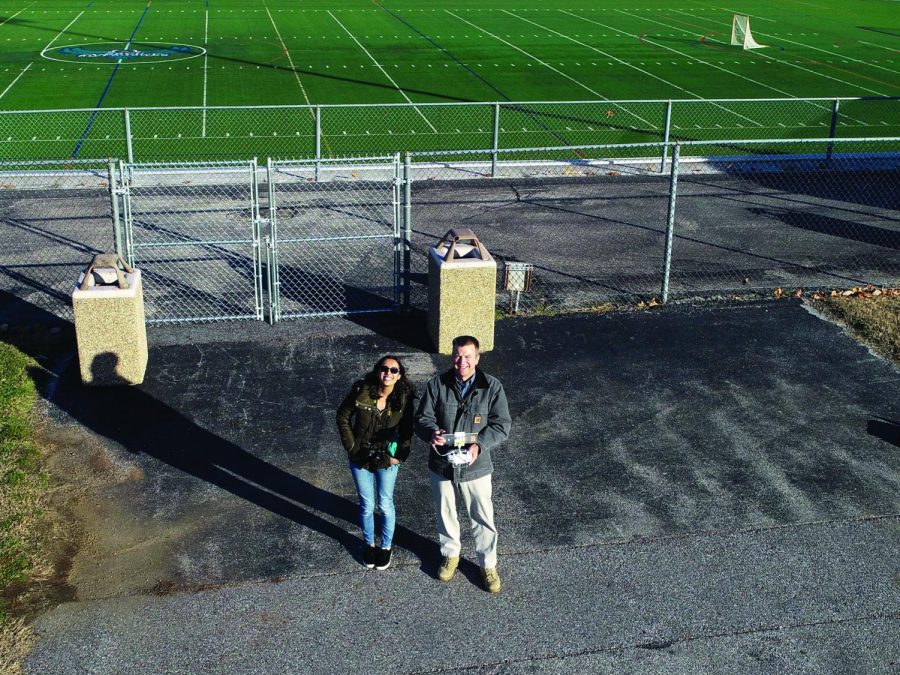Drones give students opportunity to fly
Former Campus Current Editor-in-Chief Amber Nathan watches Tim Tumelty, who is in charge of AACC’s drone program, fly a drone on campus.
January 22, 2020
In Annapolis in 1997, a baby came into the world who would one day want to fly.
Born prematurely, Nathaniel Disney weighed 1 pound, 1 ounce. He spent four years in a wheelchair because of cerebral palsy from the ages of 9 to 13. However, he said he has always dreamed of flying.
Disney, a third-year transfer studies student, said he often traveled in airplanes as a child.
“As a kid I always wanted to fly,” Disney said. “I loved flying. … I loved going fast. So that always was an ambition of mine, a dream to be a fighter pilot for the military.”
But in middle school, Disney learned he couldn’t fly for the military because he had muscle complications in his leg from cerebral palsy.
Still, he did not give up.
“My passion still burned for flying,” Disney said.
So he turned to drones—small, unmanned aircraft often used to take photos and video footage.
Some drone pilots use special, high-tech goggles to see through a camera attached to the drone while it’s flying. This type of drone piloting—also known as first-person view flying—is like being in a Star Wars movie, according to Disney.
“It’s like you’re flying like a podracer in Star Wars,” Disney said. “You’re like a bird. … It’s like a rollercoaster that you can control and it … gets your heart racing. It’s like skydiving without a parachute.”
Professors and students at AACC use drones in classes.
Time-based media professor Zoe Friedman required her students to use drone footage of the campus as part of a video project.
“I’ve been thinking about how to integrate [drones] into the classroom and have students feel like they can easily access this,” Friedman said.
Colin Wolfe, a non-degree seeking student, said he enjoyed learning about drones as part of Friedman’s class.
But he said he didn’t like that he couldn’t fly the drones himself.
“My least favorite part was that in order to fly [the drones] ourselves, we have to get certified,” Wolfe said.
AACC offers two one-credit classes this semester that will prepare students to take the Federal Aviation Administration test to become certified drone pilots.
From there, students can take flight school classes to learn how to fly drones.
Architecture and landscaping professors Robert Lowe and Brandi Shepard, program coordinator for construction management, use drones in their classes to examine AACC buildings for sustainable features such as vegetated roofs. The plants grown on “green roofs” absorb rainwater before it can become runoff.
The AACC drone lab in Careers 184 launched in summer 2018.
Instructional specialist Tim Tumelty is in charge of the drone program at AACC. Professors can make appointments with Tumelty to have him fly drones for their classes.












